August 19 - 25, 2012: Issue 72
Ingleside Powder Mill
Pittwater Fields of Dreams I


Ingleside House and the Narrabeen Powder Works in 1887. No title. (1937, April 7). Sydney Mail (NSW : 1912 - 1938), p. 15. Retrieved from http://nla.gov.au/nla.news-article160501938
Below - sections from above Sydney Mail Picture 'blown up' to show details


Ingleside Powder Mill - Pittwater Fields of Dreams
In December 1882 a man travelling under the name of Von Bieren arrived in Sydney aboard the Orient. He was travelling with his wife; both of them passengers in the First Saloon;
ORIENT VON BIEREN, MR, PASSENGER, 1ST SALOON. VON BIEREN, MRS, PASSENGER, 1ST SALOON mariners.records.nsw.gov.au/1882/12/042ori.htm
Claiming to have been the proprietor of the Philadelphia Powder Mill, and then powder mills in Pennsylvania prior to landing in the colony, this gentleman soon had begun a new enterprise along the same lines. In 1884 he bought 320 acres of vacant isolated land high up on what was then called "Sugar Loaf Hill", or the plateau above Narrabeen we call Ingleside, a name this man gave to the house he built in the gully further south of the hill, near where the present day Monash Golf club is.
On the land overlooking Mona Vale to the east and Narrabeen lagoon to the south he established a powder mill factory where he would make blasting powder and gunpowder. Drying chambers, a shot tower (tall structures alike chimneys where small pellets of metal, usually iron in those years, were dropped and spun, heating in falling. To become round pellets before cooling in the water they were dropped into), all that was needed he built.
An important industry is about to be established at Narrabeen, New South Wales, where the necessary structures are being erected for the manufacture of gunpowder and blasting powder of various kinds. The proprietor of the works is Mr. C. Van Buren, formerly proprietor of large powder mills in Pennsylvania, who has secured a site exceedingly well adapted for powder mills, and at the same time at a sufficient distance from population, and so isolated, as to leave no room for apprehensions of danger in the event of an explosion taking place. It is expected that the works will be sufficiently advanced in about six weeks' time to enable the proprietor to commence the manufacture of black powder. NEWS OF TEE DAY. (1884, March 8). The Age (Melbourne, Vic. : 1854 - 1954), p. 9. Retrieved from http://nla.gov.au/nla.news-article198558463
Mr. CAMERON asked the Colonial Secretary, without notice, whether he was aware that a company had been formed for the manufacture of gunpowder and dynamite somewhere in the vicinity of Narrabeen, and, if so, whether it was his intention to appoint an officer to see how these explosives would be distributed. Mr. STUART replied that he was not personally aware that such a manufactory was being established, and only knew of it by general report ; but if he found that the report was correct he would take care that arrangements would be made to see what became of these dire explosives. PARLIAMENT OF NEW SOUTH WALES. (1884, June 4). The Sydney Morning Herald (NSW : 1842 - 1954), p. 5. Retrieved from http://nla.gov.au/nla.news-article13563703
He floated a company called the Australian Gunpowder and Explosives Manufacturing Company, was soon backed up by those in power and had as patron then Governor, Lord Augustus Loftus. His dream was also their dream; manufacturing their own powder here rather then waiting for shipments from England to come over seas becoming more crowded by all nations seeking a stake in Imperialism.
1884 was also the year his born in Australia daughter arrived - so perhaps a little added impetus to establish himself could be seen in this:
VAN BUREN VIOLA M S 11890/1884 CLINTON (father) ANNA B (mother) MANLY (district recorded in) - NSW Births, Deaths, Marriage records.
Mr. Carl Von Berien's Ingleside Powder Mills, situate at Narrabeen, some eight miles from Manly, have been successfully floated into a proprietary company of £16,000, with power to increase to £20,000, and to be registered under the Limited Liability Company Act, All the shares were taken up in leas than 48 hours, and one-third more shares were applied for than could be allotted. MONETARY AND COMMERCIAL. (1884, May 2). The Sydney Morning Herald (NSW : 1842 - 1954), p. 6. Retrieved from http://nla.gov.au/nla.news-article13568279
Then on Saturday the 26th of July, 1884:
THE NARRABEEN POWDER WORKS. His Excellency the Governor, the attorney general (Hon. W. B . Dalley), the colonial treasury (Hon G. R. Dibbs). and a number of other gentlemen, visited Narrabeen on Saturday for the purpose of witnessing a test of the first powder manufactured at the works of the Australasian Powder and Explosives Manufacturing Company. Limited. Nearly all the visitors. from Sydney were passengers by the steamer Fairlight, which left Circular Quay at a quarter past ten o'clock. Lord Augustus Loftus, the Hon. G. R. Dibbs, and Colonel Halkett, however, were conveyed to Manly by the water police launch Nemesis. ...THE NARRABEEN POWDER WORKS. (1884, July 31 - Thursday). Goulburn Herald (NSW : 1881 - 1907), p. 4. Retrieved from http://nla.gov.au/nla.news-article103509034
The Governor, the Attorney-General, and a party of gentlemen visited Narrabeen, seven miles from Manly, yesterday, for the purpose of witnessing a trial of the first powder manufactured at the works of the Australasian Powder and Explosives Manufacturing Company. Some heavy charges of powder were fired to test the strength of the explosive.
One of the explosions caused an immense fissure in a rock on which some of the party were standing, and two workmen fell into the fissure, a depth of 15ft. One man sustained concussion of the brain, but subsequently recovered consciousness. None of the party were injured.
The Pyrmont bridge, which was lately resumed by the Government, was formally taken possession of by the Hon. G. R. Dibbs on behalf of the Government, at midnight, when the collection of tolls ceased. About 2,000 people assembled in the vicinity of the bridge, and a huge bonfire was lighted to mark the occasion of the abolition of the tolls. NEW SOUTH WALES. (1884, August 2).The Australasian (Melbourne, Vic. : 1864 - 1946), p. 29. Retrieved from http://nla.gov.au/nla.news-article138093775
The Narrabeen Powder Works.
His Excellency the Governor, the Attorney-General (Hon. W. B. Dalley), the Colonial Treasurer (Bon. G. R. Dibbs), and a number of other gentlemen, visited Narrabeen on Saturday last, for the purpose of witnessing a test of the first powder manufactured at the works of the Australasian Powder and Explosives Manufacturing Company, Limited. Nearly all the visitors from Sydney were passengers by the steamer Fairlight, which left Circular Quay at a quarter past 10 o'clock. Lord Augustus Loftus, the Hon. G. R. Dibbs, and Colonel Halkett, however, were conveyed to Manly by the water police launch Nemesis. On reaching Manly it was found that there were in waiting a large number of buggies and other vehicles, which had been engaged to take the visitors to Narrabeen, which in distant from Manly about nine miles.
The visitors reached Ingleside, the residence of the managing director of the Powder Mills, Mr. Van Bieren, at about half-past 1 o'clock, and were welcomed by that gentleman. It had been intended that all should be afforded an opportunity of learning some thing about the different processes of manufacturing powder, but no one evinced the slightest amount of regret when an intimation was made that the acquirement of knowledge respecting explosive compounds would be deferred until after luncheon, which had been laid out in the men's dining-hall by Mr. J. Callaghan, of George-street. The tables were speedily surrounded by upwards of one hundred gentlemen, all of whose appetites had been sharpened by the drive and the walks they had indulged is.
Amongst those who eat down to luncheon were— The Attorney-General, the Colonial Treasurer, Colonel Roberts (officer commanding Permanent Artillery), Sir Edward Strickland, K.C.B., Colonel Halkett, Messrs. Garvan and Targett, Ms.L.A., the Mayor of Manly (Mr. C. H. Hayes), Drs. Tibbits and Markey,' Messrs. Augustus Morris, J. G. Griffin, J. H. Goodlet, Laurence, Counne, J J. Lough, Robie, and J. S. Robertson (D. and W. Robertson). His Excellency could not be prevailed upon to sit down at the commencement of the meal, but entered before it had been concluded ; and Mr. Van Bieren then took the chair.
His Excellency at once rose and said : Gentlemen, I am sorry my short stay compels me to address to you a few words before the end of the luncheon, because that is always the cheeriest time when words and feelings come most strongly. I have to thank you, Mr. Van Bieren and company, for the kind invitation you have given me to visit these interesting works. I may say shortly that I have had much, pleasure in visiting them, for two reasons. The first is, I am extremely glad to testify my appreciation of the public spirit and enterprise this company has evinced in erecting these works. (Great applause.) I may say that it is an entirely self -supported industry— that is to fay, the investment is entirely from the company itself, unaided by the Government. I beg to express my fervent wishes for the success of Mr. Van Bieren and Company. (Applause.) I -will ask you, gentlemen, to join me in drinking the ' Health of Mr. Van Bieren and Co., wishing them every success in this laudable and patriotic industry.' (Cheers.)'
The toast was enthusiastically received, Mr. Dalley proposed the toast of ' Colonial Industries,' coupling with it the names of the Australasian Powder and Explosives Manufacturing Company, limited, and Mr. Carl Van Bieren. He alluded to the possibilities of the usefulness of such an industry in connection with the question of national protection, and pointed out that we were consumers of enormous quantities of ex plosive materials. Various forms of our industries required the employment of these materials for their full development. No better proof could be given of the greatness of our demand than the fact that we were importers in 1882 of about three million pounds of powder of various qualities. It had been said that the woods Of this country bad not been found suitable for the manufacture of powder, but experiments had disproved that. Mr. Van Bieren responded to the toast, and in the course of his remarks pointed out that sulphur could be obtained in New England, and it was only the absence of saltpetre (which was obtained from Calcutta), that prevented the enterprise from being a thoroughly native industry. The toasts of 'The Visitors.' 'The Frets.' 'The Ladies,' and 'The Chairman' having been drunk, the company left the table and proceeded in the direction of a gully at the head of which a quantity of powder was to be tested.
While the visitors were walking through water in the direction of the gully, there was an. explosion, which was quickly followed by another. Some of the foremost of the party were told that there were three charges of powder, that it had been intended they should explode . simultaneously, but through some mischance the three charges did not go off at the same time. The visitors, however, were further assured that all the three charges had now been exploded, and it would be best to go and see what havoc the powder had wrought. Three of the men employed on the works, and Messrs. Augustus Morris and Griffin, went down upon a kind of ledge composed of freestone, and within a few yards of a mass of freestone which had been overthrown by the explosions. A few seconds afterwards then was what Mr. Morris described as a kind of rumble mumbling an earthquake (but what others knew to be an explosion), and an immense fissure was created in the rock.
The three workmen and Messrs. Morris and Griffin were thrown down by the concussion. Two of the men fell into the fissure, a depth of about 15 feet, and were rendered unconscious. The other man (James Mackey, foreman of quarrymen) fell upon the top of the rock, but did not receive any injury. Messrs. Morris and Griffin fell across the fissure, but received no injury. On rising from the rock, Mr. Mortis cried out that there were two men in the fissure. They were speedily brought out and removed to the engine-house, where they were attended by Drs. Tibbits and Markey. One of the men was a labourer named James Daly, residing on the Newport-road, and the other was a plasterer named Henry Cox, who lives in Macquarie-street South. Daly's face was covered with blood. It was found on examination that he was suffering from scalp wounds and a fracture of the jaw, caused it was supposed, by some pieces of stone falling with him. Cox was suffering from shock and concussion of the brain. Both men speedily regained consciousness, and were curious to know what had happened. It was then elicited from the foreman, James Mackey, that three holes had been drilled in the rock, two to a depth of 20 feet, end the other to a depth of 12 feet. The bores averaged about 4 inches in diameter, were in a direct line, and were 21 feet apart. It was noticed that the first and second shots had overthrown a mass of stone 60 feet in length, 10 feel in width, and 8 feet In height. The third shot had seemingly created a fissure in the remainder pf the rock. The fissure was about 26 yards in length, varied in width from 3 to 1 foot, and, in depth was about 15 feet The quantity, of free stone loosened by the three charges of powder, which aggregated about 461b., was variously estimated, the lowest estimate being.1000 tons, and the highest 3000 tons. One peculIarity the action of the blasts was that the force of the concussion had a lateral-effect. Had, as is often the case, the last explosion been accompanied with quantities of rock being discharged into the air, it would be hard to estimate the loss of life that would have resulted.
Immediately after examining the site of the explosion the party were driven to Manly, which was reached about 6 o'clock. On the way thither three vehicles met with mishaps, and one had to be left behind, and the passengers walked to Manly. The Narrabeen Powder Works. (1884, August 2). The Sydney Mail and New South Wales Advertiser (NSW : 1871 - 1912), p. 212. Retrieved from http://nla.gov.au/nla.news-article163270308
The "Milch Cow"
That trip to see the new gunpowder works at Narrabeen up Manly way, undertaken on 26th of July by His Excellency the Governor (Lord Loftus), the . Hon. W.; B. Dalley, the Hon. G. R. Dibbs, and many, others, was not a pleasant one. There was a series of mishaps. The roads were knee deep in mud ; it was necessary sometimes to wade through water; horses were stubborn and occasionally would not go ; and at the works where experiments with gunpowder were made for the inspection of the visitors, the explosions caused serious accidents to, some of the men employed. The Narrabeen works are the only ones in Australia. They have not been established by the Government, but by the Australasian Powder and Explosives Manufacturing Company,' limited. It is altogether a matter of private enterprise. We want more private enterprise, more private companies, more independent action. In England most of the great works including the railways, are performed not by Government, but by companies. We have often drawn attention to that fact. His Excellency the Governor made some sensible remarks on this very point. He said 'l am extremely glad to testify my appreciation of the public spirit and enterprise this company has evinced in erecting these works. It is a self supporting industry; that is to say, the investment is entirely from the company itself, unaided by the Government. Now my observations in this colony lead me to the conclusion that the Government is called upon to pay for everything. (Hear, hear.) The Government is regarded as a sort of milch cow that everybody, particularly those gentlemen-in Macquarie-street— (laughter) — think they have a right to milk. I have seen in .this country very few evidences of public spirit and public enterprise. These are true and good words. When we ourselves think of the roads, the bridges, the water and gasworks, the railways, the telegraphic lines, markets, the steam boats, etc, all started by private companies in England and elsewhere, the force of Lord Loftus's remarks is more keenly felt. If we had more companies, people would have some other means for investing their money besides in strips of land and small paddocks. The "Milch Cow." (1884, August 2). Balmain Observer and Western Suburbs Advertiser (NSW : 1884 - 1907), p. 3. Retrieved from http://nla.gov.au/nla.news-article132245186
The Powder Company's Works, near Manly, N. S. Wales.
1. The Manager's Residence. . 2. Rocks split by Experimental Blast. 3. The Powder Works.
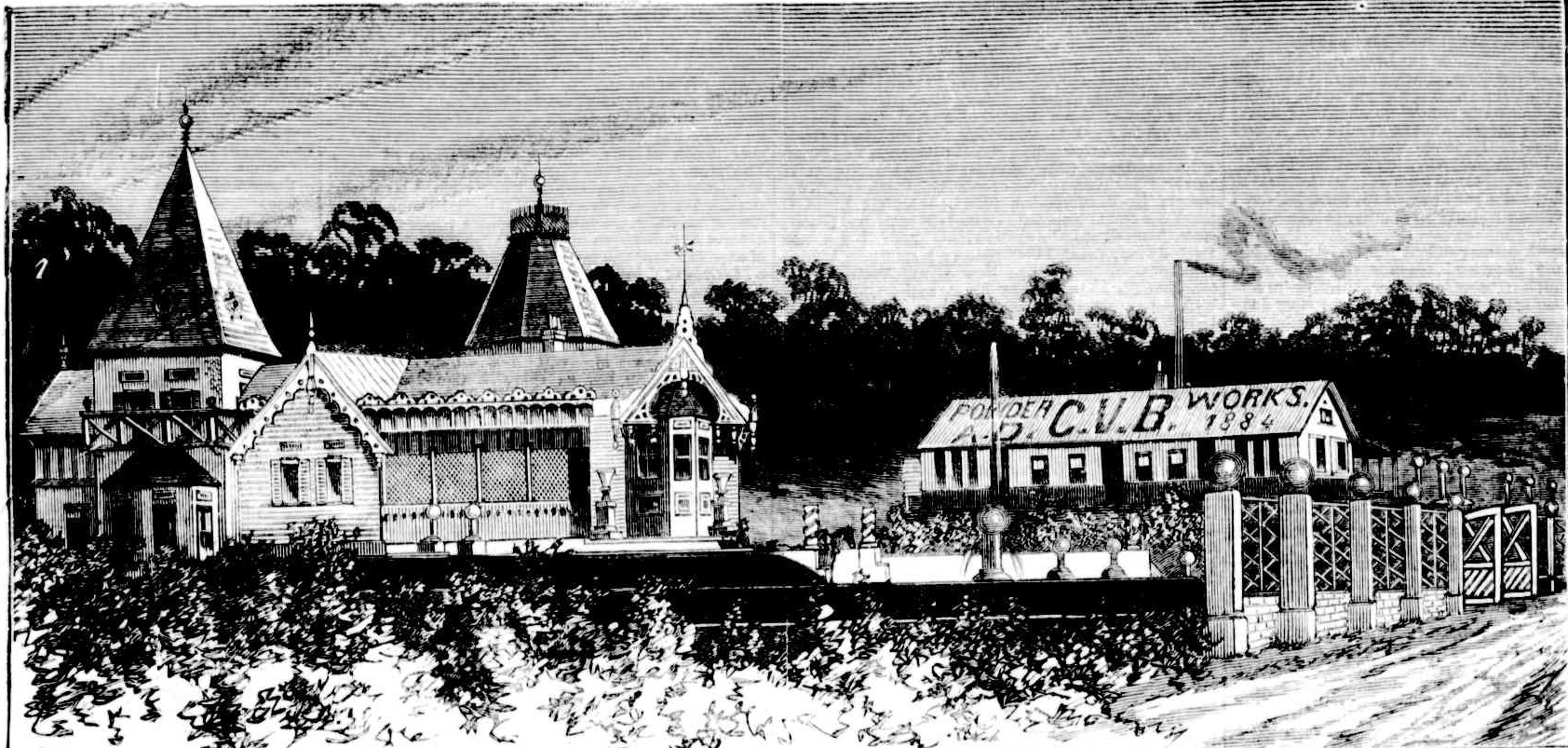
.jpg?timestamp=1561437809362)
.jpg?timestamp=1561437843903)
The Powder Company's Works, near Manly, N. S. Wales. (1884, August 16). Australian Town and Country Journal (Sydney, NSW : 1870 - 1907), p. 26. Retrieved from http://nla.gov.au/nla.news-article71016034
In October 1884 this is published:
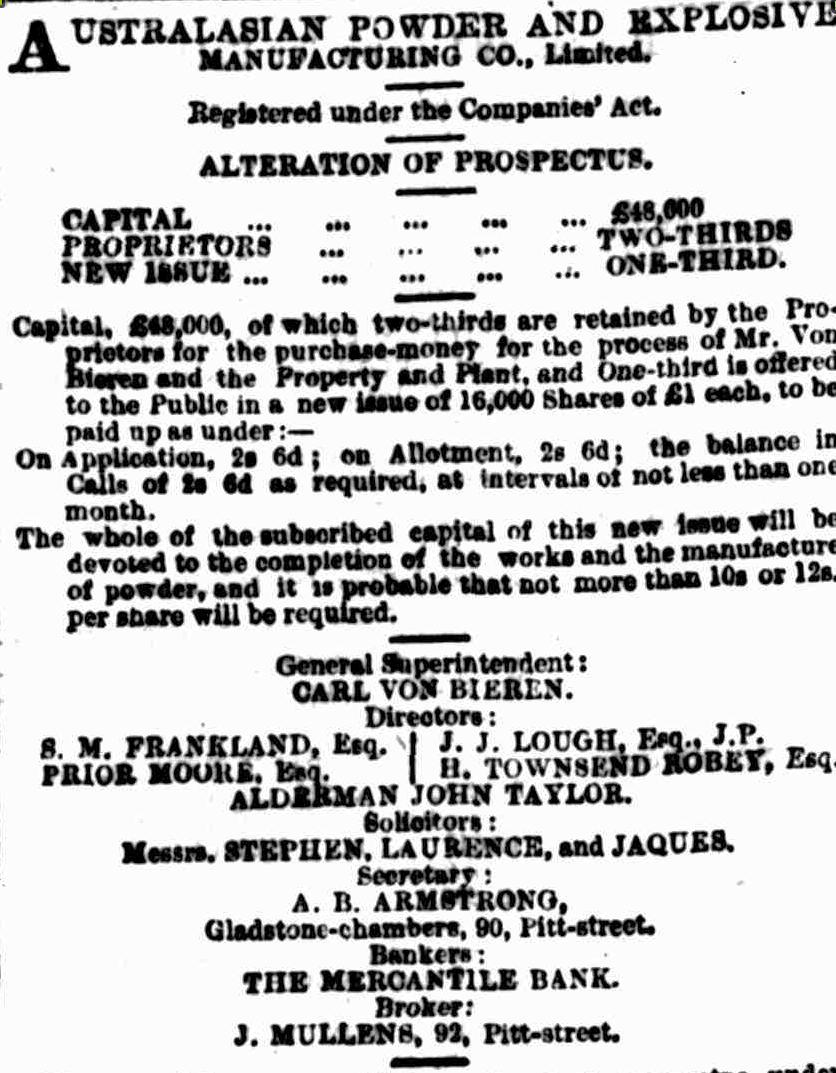

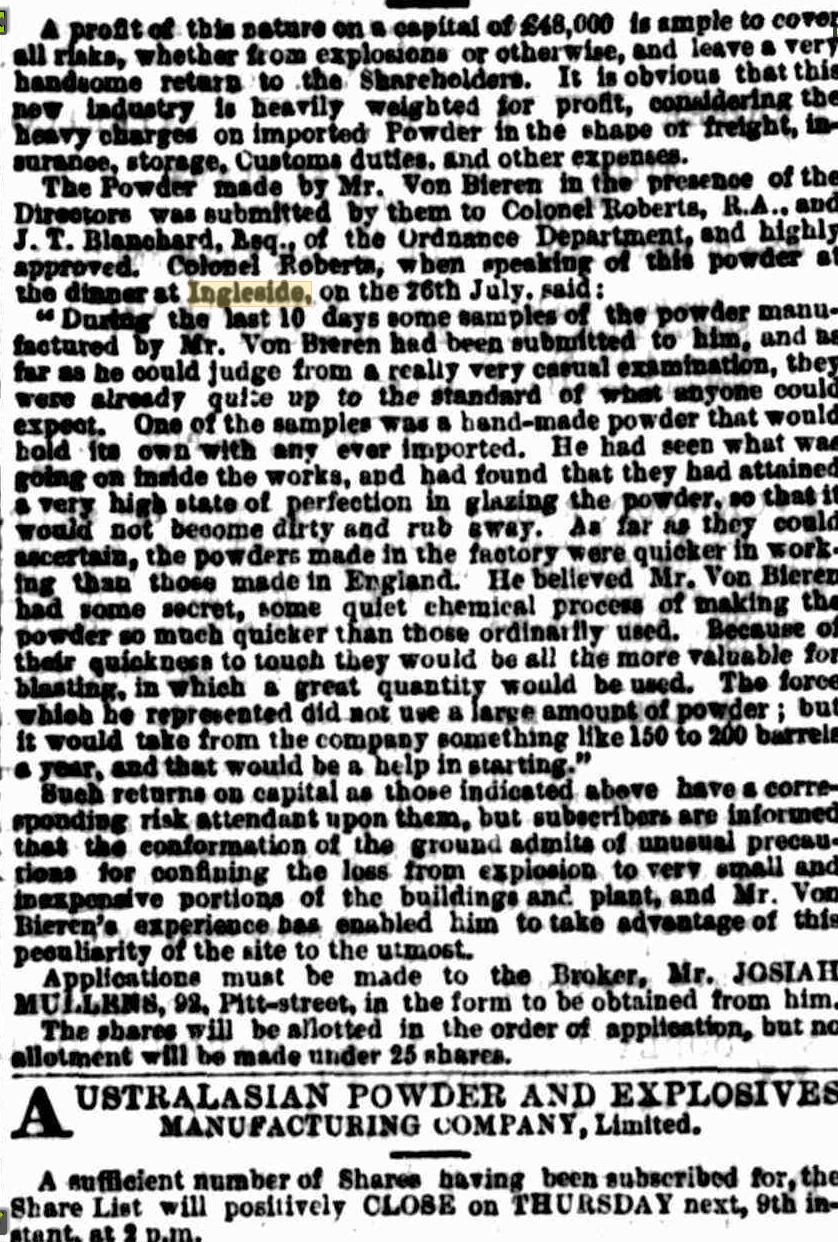
From: Advertising (1884, October 4). The Sydney Morning Herald (NSW : 1842 - 1954), p. 5. Retrieved from http://nla.gov.au/nla.news-article28368543
A description of this field of dreams from one who some sources claim never actually visited the premises;
"The powder mills are the first in the colony – that of course is to everybody known; but the powder mills are also the most extensive and complete in the southern hemisphere, which in fact may be new to all who have not inspected them. Everything that capital could command and ingenuity devise has been obtained and adopted. The crude nitre is placed in an elaborate refinery here and reduced to the required condition, the gum trees are cut down, and the hardest gum wood is so treated as to produce the most perfect gunpowder charcoal, and down in substantial stone buildings, separated from each other by breadths of turf, and worked and managed by men dressed in flannel garments, with india-rubber shoes, no scrap of metal or of any material that might possibly produce the slightest combustion amongst them all. In a ravine, well sheltered and secluded, they pursue their black art, but high above, amongst the green woods and the abundant flowers, Mr Von Bieren most courteously entertains all visitors in his charming little home. Those who roam in search of the beautiful will not be concerned with the powder works, but they will certainly halt before this chalet, as in sight of Narrabeen Waterfall or Manly Cove. It is like an actual shrine to some deity of the flowers of the land, and quite unlike any other house in or about Sydney, or Manly, or any other Australian town. You might imagine it imported as it stands, from the Tyrol, built under the inspiration of peaked mountains and tapering pines, and the grace and colour which the humanity of that high fair land loves to display.
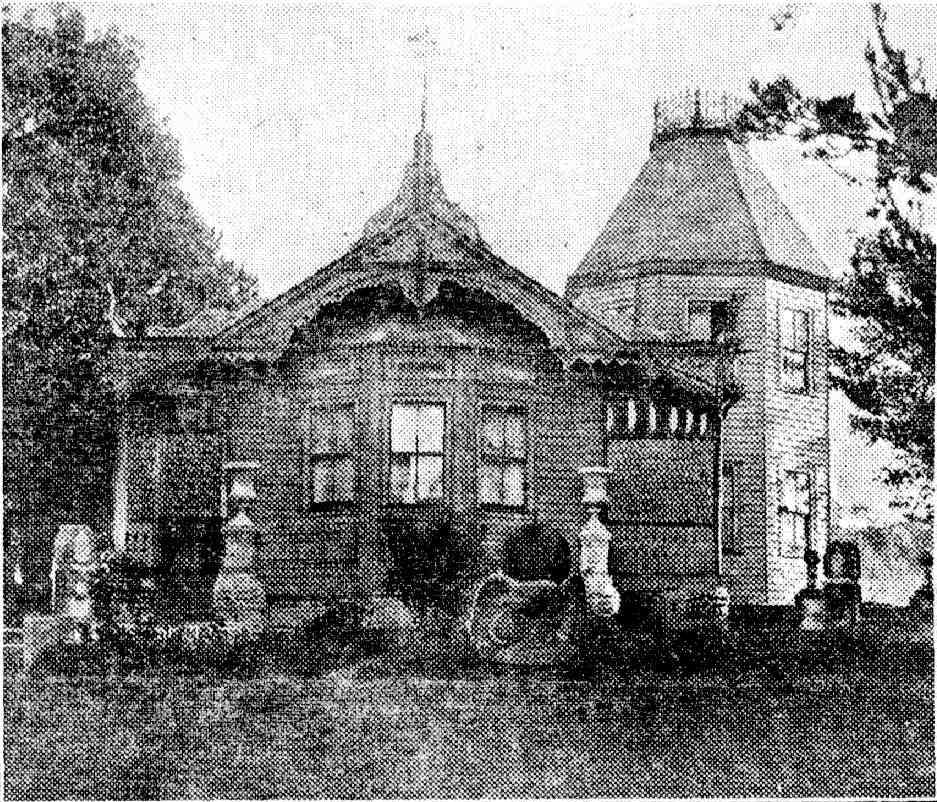
It is a little house that contains a lot of accommodation, long and lofty rooms, approached beneath peaked and gabled verandahs, or by quaintly carved flights of stone stairs, with a little octagon tower in the centre, containing boudoir below, study above, and over all a little gallery, beneath a steeple roof. Roof of a deep dull red, that suits the landscape as well as do the old red tiles, the tiles that Ruskin loves to praise, the village scenes of England. All this beauty Mr. Von Bieren designed for himself, as also the carved stone fountain, fed from a reservoir excavated in the hill above, and the terraces, parterres, and elaborate surroundings of the garden. It is indeed a marvel in the bush, and it is, in a certain sense, instructive to contrast these fair and adequate provisions for all the requirements of a cultured and refined humanity with the arrangements we are more usually familiar with in our bush; the uncouthness, the rudeness, the lack of any consideration for the higher, better life, which characterises, not the Australian pioneers only, but the wealthy settler of the second or third generation. It is to be hoped that Mr Von Bieren’s chalet, as his powder, will work in the land, to the shattering of many crude old notions, and parsimonious prejudices, that he may aid in the blowing away of that still old English notion of a house, which bars the way to a full development of the architecture natural to and worthy of our land". - Francis Myers' 1885 "A Traveller’s Tale: From Manly to the Hawkesbury"
And from that same year: the Frankland – Taylor connection: Narrabeen Powder Works: NARRABEEN POWDER WORKS. (1885, June 20). The Sydney Morning Herald (NSW : 1842 - 1954), p. 10. Retrieved from http://nla.gov.au/nla.news-article28362489


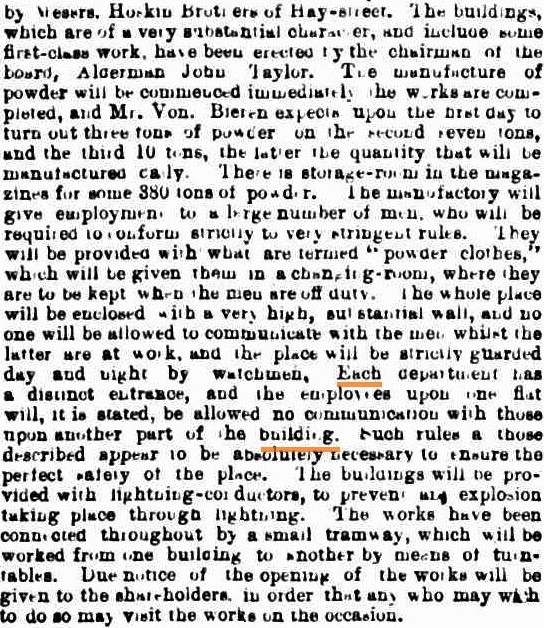
Narrabeen Powder Works
About twelve months ago a visit was paid by the Governor, several members of Parliament, and a large number of gentlemen, to the Australasian Powder and Explosives Manufacturing Company's Works on the trial of the colonially-made powder. The company had then been only in operation about three months, the works having previously been earned on by Mr. Carl Von Bieren, an American, who arrived in this colony in the latter part of 1882, and at once beheld a good opening for the manufacture of powder. Putting some of the local timber to a trial to test its carbon producing quality, he found the result so satisfactory that he selected land outside the population boundary and began operations. Heavy rains, want of roads, and an isolated position, all tended to retard his work, while the heavy expenditure for cartage was enough to daunt' the stoutest heart; but is. this trial his character much resembled that of Mark Tapley, who was happy in all circumstances, and declined to feel discouraged. At length, after spending -many thousands of pounds, Mr. Von Bieren found that, owing to the cost of labor' and machinery being so much, out of proportion to his American ideas, he would be compelled to either let the enterprise drop through his hands or float a company. The latter alternative was adopted, and the company was floated in Manly by a number of influential residents, commencing its operations under the present title. Difficulties and heavy expenditure met them at all turns. However, knowing well that these expenses were inevitable, the company steadily put their shoulders to the wheel, and pushed ahead with the work. But the money raised by them proved insufficient, and soon it was found necessary to float more stock. This was done, and the shares were eagerly taken up by the Existing shareholders ; and it was at this point that the company began to gain publicity, and thereby power.
The contract for the main buildings had only been given to Mr. John Taylor at the beginning of the present year. He undertook to complete the work in four months ; but, owing to the rainy season, found it impossible to finish in contract time. The works at present consist of a massive stone building erected by Mr. C. von Bieren, containing two magazines thoroughly spark proof, in. which the finished powder will be stored; two miring rooms and the offices, which are of two storeys, containing four rooms, two of which will be used as offices, one as a searching room, and one as densimeter, or testing room. Mr. Taylor's contract consist of a large iron building, four storeys high, with elevators, retort house, boiler house, and glazing shed, all on a large scale.
Messrs. Hoskins Bros., of Hay-street, have executed their contract for machinery in a high-class and finished style, and when it is taken into consideration that this is the first effort of its kind, ever made ' south of the line,' it reflects great credit upon both the engineer, Mr., J. W. Bock, and upon the contractors. Messrs. Nelson, of Hay-street, have also supplied a large portion of the machinery, and have given every satisfaction in the manner in which their part of the work has been done. This required to be properly fitted, as it is in their smooth working that the finished powder will be in operation.
Messrs. Milne Bros., of Sussex-street, have executed in a workmanlike style most of the brasswork ; while Messrs. Robertson, of Melbourne, deserve great credit for the manner in which they have completed the copper dams in which the saltpetre will be refined.
Mr. von Bieren is now erecting a large brick building for the operation of refining saltpetre. This is the most solid building on the ground, and reflects great credit upon his constructive ability. The operation of refining saltpetre is one requiring careful manipulation; but the experience acquired by Mr. von Bieren in America in the manufacture of explosives naturally enables him to forsee all requirements.
The timber from which this charcoal is made, and of which there is a large supply forward, is first cut down and treated by a chemical process only known to the manager. It is then placed in iron cylinders about 2ft 6in diameter. These are lifted by means of a crane into the retorts. The doors are closed, and the whole is subjected to an intense heat, which soon converts it into carbon. During this operation a large quantity of pyroligneous acid is given off and a very bright gas evolved, which will be utilised in lighting the outbuildings, the internal and dangerous portions of the works being lit by the electric light, to lessen the danger of explosion and facilitate the operations, which will be carried on night and day. From the retorts the charcoal is sent down by a lift to the immense grinding machine, resembling a Chilian mill. Here it is finely pulverised, but to prevent any grit from remaining among this it is next taken to another floor, and ground still finer by means of 29,000 bronze balls revolving in large wooden drums. From here the powder is taken on a tram to the charcoal reels, which revolve at a high speed, and sift it it to an almost impalpable mass. The charcoal is now ready for use, the next operation being the refining of the saltpetre, which is brought to the works in the erode state and there subjected to a boiling process, whereby all foreign matters are given, off, leaving it as white as snow. This operation takes place about 300yds from the main buildings ; the saltpetre being also subjected to a grinding process similar to that of the charcoal. The sulphur, after being refined, is put through a sulphur reel and thoroughly sifted. The various materials being now ready/they are taken to the mixing room, which is kept strictly private, there being only three persons initiated into this process, for it is at this point that one of Mr. Von Bieren's secrets is utilised.
From the mixing rooms, where the mixture, is incorporated with certain chemicals and made into a paste by the addition of liquid, the powder is conveyed to an hydraulic press, placed between copper plates, and subjected to an enormous pressure, from whence it comes in a cake as hard as rock.
To give an idea of the enormous pressure the powder undergoes, it may be mentioned that during a test given it a few weeks back, a piece of hardwood 14 x 14in was crashed like a nut. From the press the powder goes to the breaking down mills, which consist of three gunmetal rollers, which break the caked powder into marketable sizes. It is then glazed by the addition of plumbago, and last of all sifted to the required grades by means of oscillating sieves, and it is then ready for packing, and it is hoped, a quick sale. This is a short synopsis of the manufacture without going into technical details. The employees will be under the most rigid regulations, which will be strictly enforced. They will be, required to sign a twelvemonths agreement, and also to bind themselves to refrain from intoxicants under a penalty of instant dismissal, and the forfeiture of one month's pay.
All the workmen will undergo a strict examination before going to work, and have to change their clothes for a suit of flannel or other suitable material. These suits Will be made without buttons or metal of any description, so as to reduce danger to a minimum. The feet will be covered by leather or indiarubber slippers; and as all necessary arrangements are made to prevent a man leaving without permission the building in which he is working, it is hoped that by such means the risks of accidents may be reduced to a minimum. It is expected the machinery will be capable of turning out from 7 to 10 tons per day, which will be immediately sent away to. other magazines for storage, as it is wisely intended not to keep a large supply at the works.
The public generally, even those persons most interested, have but a faint idea of the extensive character of these works, and it would well repay any person to go and see them before the manufacture commences, the necessity for conducting the manufacturing processes privately will Tender subsequent visits difficult, if not impossible. It is, however, surprising that the Government should be so apparently indifferent to the welfare of what should prove a public' benefit to the country, as not to grant a sum for the repair of the roads, especially that part situated between the spot where the Collaroy went ashore, and the Narrabeen Lagoon ; last year' his Excellency Lord Augustus Loftus having to get out of his carriage and 'pad the hoof,' owing to the horrible state of the roads, and he cannot have forgotten that day, nor can the Hon. W. B. Dalley either; for it took all his persuasive powers to induce his Excellency to continue his journey. If the Government are ignorant of the state of this road, it is only fair to remind them of the tact. It must be acknowledged that it would be an advantage to the public, for with the ' dark - .. clouds lowering about is, and a Conservative and not a ' peace at any price ' government in power, we shall certainly be plunged into war if Russia still asserts her demands. If this is the case our supplies of explosives will be at an end, and we shall have to trust to our own resources and had it not been for the enterprise and dogged determination of our friend, Carl Von Bieren, would still be non est. Narrabeen Powder Works. (1885, July 28).Evening News (Sydney, NSW : 1869 - 1931), p. 5. Retrieved from http://nla.gov.au/nla.news-article111022734
Narrabeen Powder Works
AN IMPORTANT UNDERTAKTNG.
On Saturday last a large party of gentlemen, at the invitation of the Mayor of Manly, Mr. C. R. Austin, paid a visit to the powder works at Narrabeen, which have teen erected by that enterprising American citizen, Mr. Van Buren.
On arriving at Narrabeen the party nerved themselves for work with oysters and stout, and then, under the guidance of Mr. Hawkins, who explained the various processes of manufacturing gunpowder, inspected the whole of the works. Very few Sydney people can have the least idea of the magnitude and substantial character of the buildings. All the latest improvements in machinery have been introduced: .£35,000 have already been spent on the works. The average output of punpowder will be ten tons per day, which is only one-third of the actual consumption of this explosive in the colonies. Mr. Van-Buren commenced the works privately, but in May, 1884, he was induced by financial considerations, principally brought about by the dynamite scares in America, to float it into a company, of -which he holds a one-third interest. The saltpetre necessary for powder manufacture is obtained from Calcutta, sulphur from New Zealand, and the charcoal made on the works. It is expected that the profits on the undertaking will be £40 per ton.
Alderman John Taylor, who is the contractor for the buildings, also holds an interest in the company. The works are so far completed that they will be closed to the public in a few days, and operations at once commence. Gunpowder will be placed in the Sydney market in the course of three weeks. As an unlimited supply of water is absolutely necessary, a large substantial dam has been made, capable of holding several million gallons. After inspecting the works the party was making preparations for a picnic in the bush, but Mr. Van Buren, in the most hospitable manner, had the dinner served in the dining-room of his handsome villa, and had added considerably to the viands provided by the Mayor of Manly. The party then sat down to dinner ; the Mayor of Manly in the chair. Among the guests were Alderman Weeks, of Manly ; Mr. Johnson, inspector of public schools ; Messrs. M'Intyre, L. C. Walter, F. R. Krom, Haylock, J. C. Maynard, Kightly, Matthews, G. A. Hewett, Brydon, Roache, and H. J. Hawkins,.private secretary to Mr. Van Buren.
After the toast of 'The Queen' had been proposed, the vice-chairman (Mr. Haylock) proposed the toast of ''Mr. Austin, Mayor of Manly.' In returning thanks the Mayor drew attention to the immense progress of Manly during the past three years and to the fact of .£2000 haviner been given by the ratepayers as private contributions to the municipal funds. The Mayor proposed the toast of ' Mr. Van Baren,' and eulogised that gentleman for 'his energy and zeal in bringing such a very valuable enterprise to a satisfactory conclusion, and which had shown a large amount xjf brain power in that gentleman. Another manufacture of great importance would soon be commenced, in the colony, and this without' 'Government aid or protection of any kind.
Mr.. Van Buren. briefly returned 'thanks,, and said it always afforded him gratification to give any information about the industry that had been commenced, and which he was perfectly assured would prove a grand success. The company were then entertained with some beautiful duets by Mr, Hawkins,' on- the pianoforte, and Mr. Haylock on the cornet-a-piston, and afterwards returned to Manly, loud in their expressions of the genial courtesy they had received from Mr. Van Buren, and to the Mayor, for his hospitality in giving them a great treat. The worthy Mayor afterward entertained the company in ' the evening at the Clarendon Hotel, and a pleasant evening was spent. Narrabeen Powder Works (1885, August 17). Evening News (Sydney, NSW : 1869 - 1931), p. 3. Retrieved from http://nla.gov.au/nla.news-article111008849
The accounts, which differ throughout all records, even to the spelling of this man’s name, then state he was hotly pursued by Narrabeen’s then Sergeant (some sources state he was a Senior-Constable) Edward George Murphy. While some records state Edward Murphy made his arrest aboard the ship when he came into harbour in Sydney, enroute to either England or America, others state he was arrested on the English Channel while aboard a vessel bound for Old Blighty.
Either way this local policeman was clearly also responding to the numerous complaints from staff on the estate to suppliers in just about every industry from Pittwater to Manly who had not been paid for services or produce given:
James Carroll, a clerk in the insolvency Court, Sydney, produced the proceedings in the compulsory sequestration of the estate of Carl von Bieren ; he identified the signature of the Registrar of the Court, Arthur Henry, on the order absolute, the seal of the court attached to it, and the signature of the Chief Commissioner, George A. Deffell ; he produced a copy of the Insolvent Act, 5 Vic., No. 17, now in force in this colony ; section 73 dealt with fraudulent insolvency.
James Tedd sworn, stated : I am a commercial broker ; I am a director and shareholder in the Australasia Powder and Explosive Company, Limited, for which Carl von Bieren was superintendent of works, I gave him the cheque produced on September 15, 1885 ; he showed me letters from America, stating that retorts had been shipped by persons there to his order to be delivered in Sydney, to the value of £3000 or thereabouts ; the cheque was given to him for payment as a deposit on the retorts ;this matter was not connected in any way with the company ; he said that his wife was coming from America with the retorts and with some money, and that the vessel was then about leaving, and that his wife had £15,000 with her ; upon these representations I gave him the cheque: he gave me a promissory note for £1000 to cover this cheque and some other debts; he also informed me he was going down to Melbourne to get hydraulic presses and some sulphur, and would return in two or three days ; he left about a week after he got the cheque from me, and some days after that I got two telegrams from him saying he would be back in two or three days, and the second telegram informed me that he would meet me at Collins' Hotel, Pittwater, which is about 20 miles from Sydney ; I have not seen him since; he did not keep his appointment ; he owes me over £1000 now the cheque for £780 has been debited to my account ; the photograph produced is a photograph of Carl von Bieren, the person referred to. CHARGE of FRAUDULENT INSOLVENCY. (1886, March 13).The Sydney Morning Herald (NSW : 1842 - 1954), p. 11. Retrieved from http://nla.gov.au/nla.news-article13614026
The Police portrait taken on 15 March 1886, at Darlinghurst Goal:
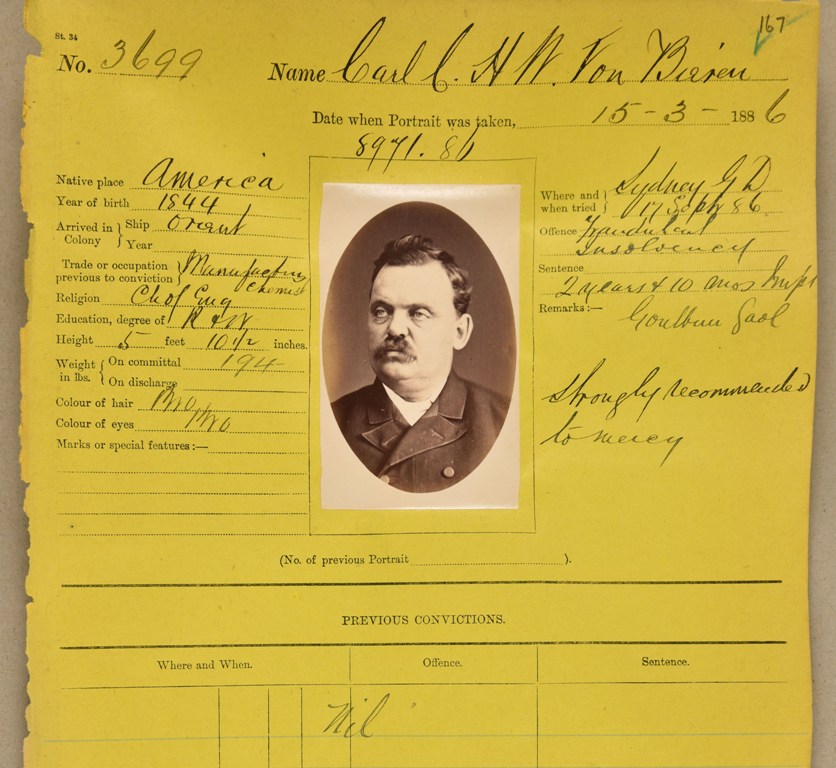
.jpg?timestamp=1516661305023)
Surname First Name Born BirthPlace Gaol DateOfPhoto PhotoNo Page Series Item Digital ID
VON BIEREN Carl C H N 1844 America Darlinghurst 15/03/1886 3699 167 NRS2138 [19/9835] 2138_a006_a00619_9835000167r Retrieved from NSW Government State Archives & Records
THE VON BIEREN CASE.
James Todd, commercial broker, in continuing his evidence, deposed that he purchased a piece of land at Pittwater for £900 as a site for making charcoal, and paid £100 deposit, giving bills for the balance; the accused approved of the site; he also said that he would buy some hydraulic presses for pressing tho charcoal when he went to Melbourne to buy sulphur ; the accused sent him two telegrams from Melbourne stating that he had bought three presses, and that he would be back on a certain day (Thursday), and would be at Collin's Hotel, Pittwater; witness broke up his home and went to live at Pittwater to manage the business; the accused did not come, nor did he send the presses; witness lost about £1400 by tho transaction; the accused never told him he was going to England or America. Elizabeth Brunne, examined by Mr. M'Culloch, deposed she was in the employ of the accused at Ingleside, Narrabeen, from August to October last year ; the accused went away twice, the second time during the last days of October; she found a quantity of burnt papers in tho fire-place: the accused owed her 12 weeks' wages ; when the accused was going away, he said he would return in two or three days. James Grant, fruiterer and greengrocer, of Manly, deposed that the accused owed him £20. Clara Goodwin, domestic servant, deposed that she accompanied Mrs. Von Bierin to San Francisco. Myles Henry Bryce, sworn, deposed that he knew the accused; in October last the accused told him that ho was going to Melbourne to buy sulphur, and that he would be back in about five days ; the accused owed him £360 14s..Id. ; he received no security for the debt ; the accused gave him five shares in the Perry Manganese Company ; the shares were valueless, and had not a nominal value ; a Mr. Young, who lived in the same house as the accused, gave witness £300 for the shares ; witness did not accept the shares as security for the debt ; it was on his petition that the accused was made insolvent. William Cross, mechanical engineer, deposed that he lived at Ingleside, Narrabeen; the accused owed him £150 on payment for goods, &c. ; the accused gave him a bill for the amount; tho accused said his wife was going to bring money out from San Francisco; he mentioned various amounts, ranging from £500 to £13,000; the accused showed him a wicker jar, and told him the row as a mixture in it ; he was to see that a pint of the mixture was put into a wooden tank containing about 200 gallons of water, in which the wood to be made into charcoal was to be soaked. Mr. Rogers wished to know what this examination was leading to. Mr. M'Culloch said he intended to call the Government analyst. The mixture in the jar was only a little ink and water. Mr. Rogers : I am instructed that this mixture is not our secret at all. Witness to Mr. M'Culloch : The mixture was of a violet colour. Sergeant Murphy, recalled, deposed that he found the jar (produced) m the office of the works at Narrabeen ;witness sealed the jar and gave it to the Government analyst. To Mr. Rogers : The revolver which he found in the accused's cabin was unloaded. Harry Montague Hawkins deposed that he had been the accused's private secretary at Narrabeen; the accused owed him £121 for wages and money lent ; on the 10th of October the accused said he was going to Melbourne to buy sulphur, and that ho would send him £50; he did not do so; he used about five or six pints of the mixture for adding to the water in which the wood was soaked. John W. Taylor deposed that he took possession of the buildings at Narrabeen for the company; he had charge of the keys; Harry Montagu Hawkins, recalled, deposed that he saw some aniline ink bottles lying about at the works at Narrabeen; in 1884 the accused told him that there was a box of dangerous chemicals at a hotel at Manly, and told him to fetch it to the works in a buggy ; witness did so; he saw it the day before the banquet which was given there, but not afterwards ; it was not the case that one of the men was killed by the explosion. Thomas Nock, ironmonger's assistant in tho employ of Felton and Co., deposed that on July 16, 1884, he sold the accused a keg of blasting powder weighing 50lb. At this stage of the case the Court rose and adjourned until 10 o'clock this morning. TRIAL OF CARL VON BIEREN. (1886, September 15). The Sydney Morning Herald (NSW : 1842 - 1954), p. 6. Retrieved from http://nla.gov.au/nla.news-article13642591
The end result was a goal sentence and no ‘powder’ ever being produced at Ingleside and those that survived the fiasco and had put up money ending up in court (one investor Samuel Marsden Frankland is reported in some as being the gentleman killed by accident by Jumbo, an elephant at Moore Park Zoo in 1886-1887 - he was a member of the Zoological Society and had donated many birds to the zoo).
If you look at the photographic records that remain, and the extensive structures that had been built, you have to wonder why go to so much effort to no avail (although interesting supposed reasons lies below under 'gunpowder plot' and 'The Multiple Murderer'). The property was offered for sale and therein lay a description, the land went over to the gentlemen named as directors above:
NARRABEEN POWDER WORKS. BY ORDER OF THE MORTGAGEES. TO LAND SYNDICATES. MANUFACTURERS, BUILDING SOCIETIES. CAPITALISTS, and SPECULATORS. NEXT THURSDAY, 20th JUNE.
889 ACRES of BEAUTIFULLY ELEVATED LAND and BUILDINGS thereon, known as the PROPERTY of the AUSTRALIAN POWDER AND EXPLOSIVE MANUFACTURING COMPANY, Limited, situate at NARRABEEN, near MANLY, within a short distance from the proposed tramway line to Pittwater.
The LAND consists of one Block of 610 ACRES, having a large frontage to Narrabeen Lagoon ; and also another Block of 249 ACRES, on which are the principal Improvements.
The land Is beautifully timbered. It undulates from the level of the lagoon to the crest of the range, about 400ft. above sea level, and from It magnificent views of the ocean and lagoon can be obtained, and a considerable portion of the soil is available for orchards.
THE IMPROVEMENTS consist us under :
1. INGLESIDE_A well-built and well-arranged W. B. DWELLING-HOUSE, containing 11 rooms and the necessary offices, surrounded by a garden of above 11 acres in extent, Blacksmith's and Carpenter's Shops, Stabling. &o.
2. Large Brick Buildings 50 x 28, also Storeroom 25 x 18
3. Large W. B. Buildings, 70 x 20, with kitchen adjoining, 83 x 15
4. A GROUND TANK, 400,000 gallons, with all connections to buildings
6. Large Stone STORE, two rooms and extensive basements. Corrugated Iron BUILDING, 21 X 18.
7. Ditto ditto, 52 x 50, with engine-room
8. Large G. C. Iron BUILDING. 100 x 36 and 60ft. In height, 4 floors, each partly lined and fitted with shafting, also engine-room 40 x 25.
Title, M. C. P., all conditions fulfilled. Liberal terms.
MILLS and PILE have received instructions from the Mortgagee to sell by public auction, at their Rooms, 130, Pitt-street, NEXT THURSDAY, the 20th June, at half-past 11 o'clock, A GRAND ESTATE, known as The PROPERTY of the AUSTRALIAN POWDER and EXPLOSIVE MANUFACTURING COMPANY. Advertising. (1889, June 17). The Sydney Morning Herald(NSW : 1842 - 1954), p. 11. Retrieved from http://nla.gov.au/nla.news-article13737020
MERCANTILE BANK OF SYDNEY V. TAYLOR.
The Attorney-General and Mr. Cohen instructed by Messrs. Norton and Co., appeared for the plaintiffs; and Mr. Pilcher, Q.C., and Mr. C. B. Stephen, Instructed by Messrs. Jones and Jones, for the defendant. This was an action brought by the Mercantile Bank of Sydney against John Taylor, to recover upon a bond and guarantee signed by him, conjointly with others, in connection with the Australian Powder and Explosive Manufacturing Company, Limited. The first count of the plaintiff's declaration was upon a bond signed by defendant and Messrs. Prior Moore, John George Griffin, Jemos Todd, and Samuel Marsden Frankland, and the claim under this bond, with interest to date, amounted to £5650 16s 9d. The second count of the declaration claimed, under a guarantee operated upon by defendant and li. Prendergast, on behalf of the Australian Powder and Explosive Manufacturing Company, Limited, and the amount for which the defendant was said to be liable was £397 11* 10d. To the plaintiff's declaration defendant pleaded that the bank, without his (defendant's) consent, released Mr. John G. Griffin, who was co-surety with him in the bond and guarantee. To this plea the plaintiff bank filed a replication stating that it was a term of the bond and guarantee that the bank might release any of the co-sureties without prejudice to their rights against the co-sureties, who were not released, and that they discharged Griffin," reserving their rights against the other sureties. It appeared, according to the statement made on behalf of the plaintiff bank, that in July, 1886, the defendant and the co-sureties already named signed a bond rendering themselves liable to the extent of £8000 on behalf of the Australian Powder and Explosives Manufacturing Company, Limited, with interest ad charges in respect of any money which was advanced, bills discounted, or cheques drawn by the company. The amount actually advanced was £10,357 16s 11 but the amount was reduced by the realisation of the Explosive Company’s plant and machinery, and about 1000 acres of land which were mortgaged to the bank. The plaintiffs, having put in their verified account, closed their case, and John George Griffin was then called on behalf of the defendant, and gave evidence as to the circumstances under which he was released from his obligation to the bank. Defendant was also called, and stated that he never consented to the release of Griffin from the bond. The case was not concluded when the Court adjourned. LAW REPORT. (1890, December 16). The Sydney Morning Herald (NSW : 1842 - 1954), p. 4. Retrieved from http://nla.gov.au/nla.news-article13799546
Below this an enlargement from: : New South Wales. Department of Lands.Parish of Narrabeen, County of Cumberland ... N.S.W. [cartographic material] 1895. MAP F 173. all courtesy National Library of Australia. G M Frankand was brother to G J Frankland
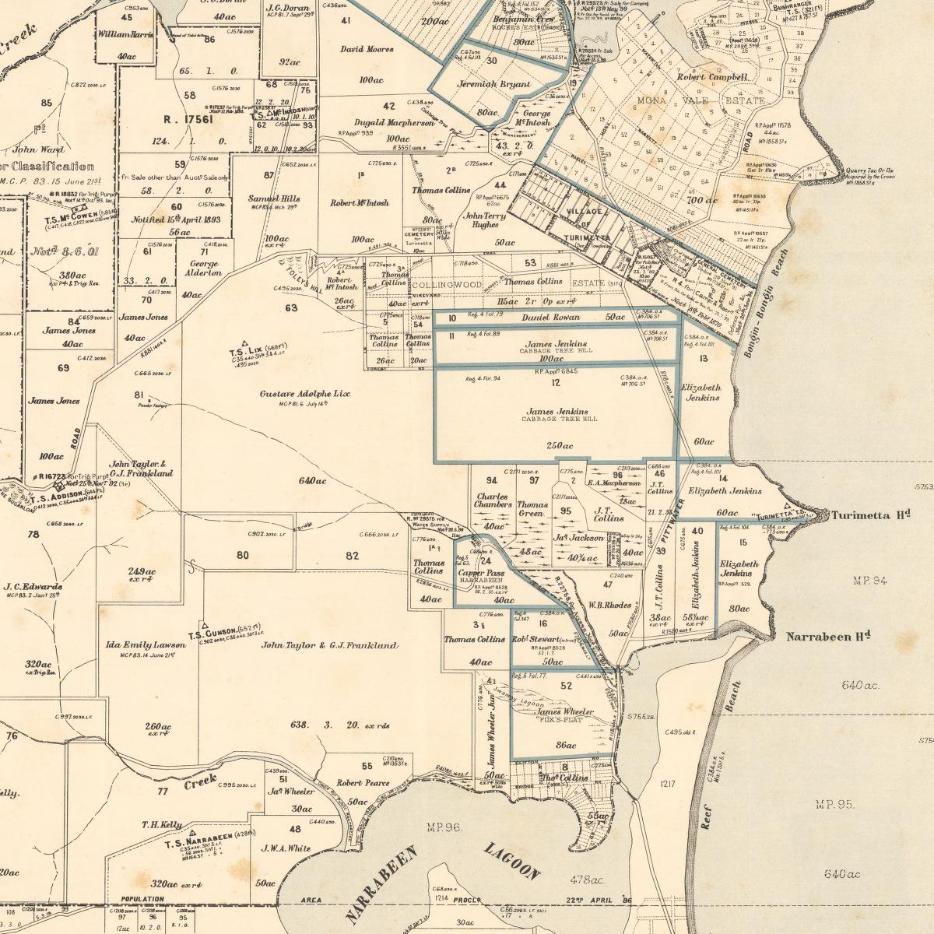
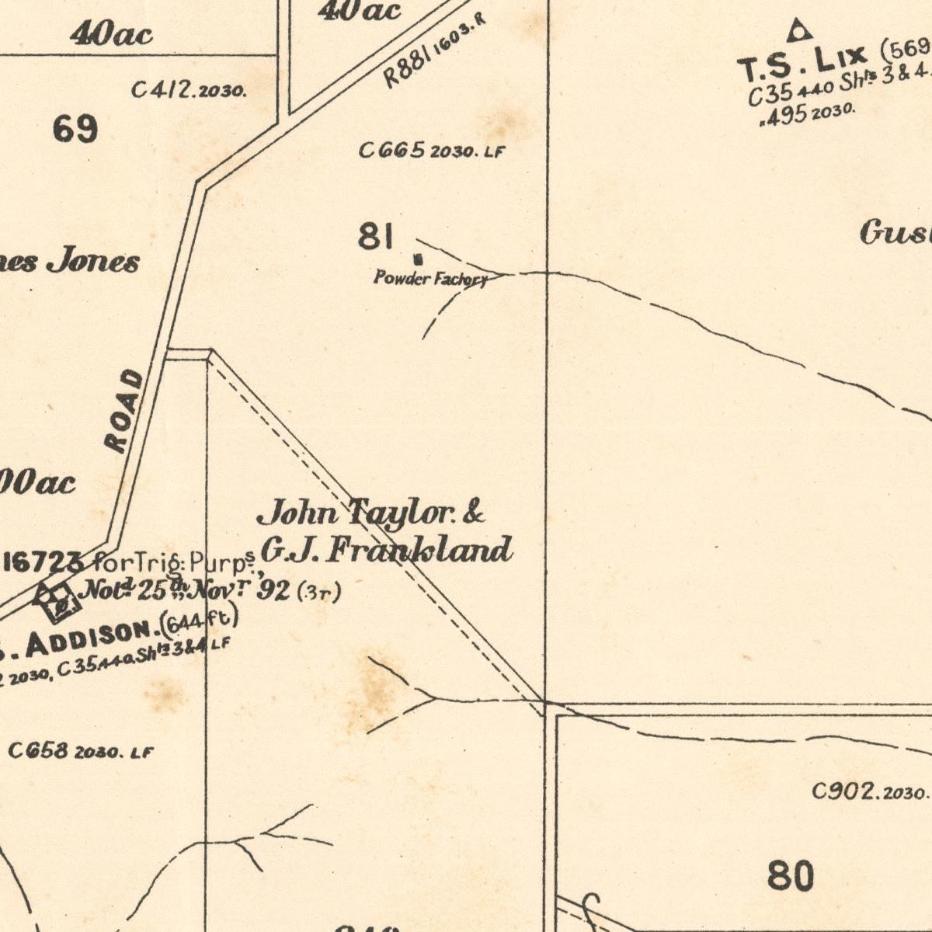
The Ingleside Powder Works and the lands of John Taylor and G J Frankland on one side and the lands of Gustave Adolphe Lix on the other are where the water courses the converge into Mullet creek were.
Irrawong waterfall, and the pool that grows bigger with good rain, are indicated as a reserve for water in 1895, Noted 20.5.1899:
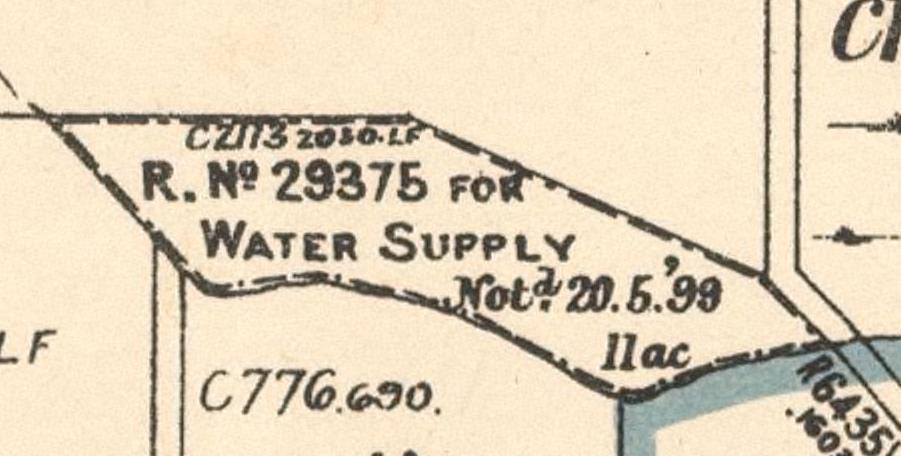
New South Wales. Department of Lands. Parish of Narrabeen, County of Cumberland [cartographic material] : Metropolitan Land District, Eastern Division N.S.W. 1905. MAP G8971.G46 svar (Copy 1). Tile b1.Made in 1895
LOT 4 NARRABEEN, 249 ACRES OF LAND, upon which is erected a substantial and well finished STONE and WB RESIDENCE, which contains extensive accommodation, also a number of outbuildings and a large quantity of building materials
The Property is known as "INGLESIDE," the residence of Mr WATKINS and formerly the residential portion of the Powder Company s property. There is a large brick and cement reservoir, with a capacity of 1,000, 000 gallons The water is laid on to the House Stables etc.
A SPLENDID BLOCK FOR SUBDIVISION PURPOSES having a large frontage to Lane Cove and Pittwater roads, and road leading to Narrabeen Immediately opposite Mr Larkin's Orchard THE TITLE IS TORREBNS. Plan on View at the Salerooms. Advertising (1912, January 20). The Sydney Morning Herald (NSW : 1842 - 1954), p. 25. Retrieved from http://nla.gov.au/nla.news-article15303595
The oddest part of the story occurs in the 1960s, when a mine shaft was discovered on the hillside near the B'hai Temple (in a search for a missing teenager recorded in Stephenson, B & B; Subterranean Sydney, Reed Publishing, Sydney, 1982). The shaft was very deep and attempts to fill it failed. It was capped eventually but one of the rumours around in the 1960s was that it led 8 km to Careel Bay in Pittwater and was built by Von Bieren to smuggle out explosives from the Powderworks.
And even ‘Australia’s Gunpowder Plot’ published in 1949 in a Australia still reeling from the effects of World War II which states the whole powder works factory was simply an elaborate ‘cover up’ to collect and export a resin made from grass trees and that the man in question was a German spy.
Either way, and even through enjoying all the speculations, this man had a dream and he built it. Those living around him, considering the numerous records of other powder mills blowing up during these years, may be fortunate he either ran out of money, investors or incurred the envy of those not so energetic in making things manifest. His dreams have left us with Powderworks road and the name of one of our lovelier and greener suburbs. Considering Ingleside’s meaning is; ‘The area immediately surrounding a fireplace or hearth’, we may wonder if this man also had a sense of humour in his naming of his home beside a powder works or simply yearned to have what then slipped away; a dreaming place among green fields, a home.
And this wasn't the last time it was used as such. In fact, after most of the ruckus had died down, someone did blow a few things up at Ingleside and we may now wonder what this place looked like prior to this 1900 display, when tales and threats and rumours of war were circulating once again:
Trial of Cellinite at Narrabeen. SUCCESSFUL EXPERIMENTS.
[By Geo. C. Craig, Sydney)
Last Saturday — the 29th — a large party of powder experts, capitalists, and friends of Mr. Alex. Fraser visited the powder factory of Ingleside, Narrabeen, kindly placed at Mr. Fraser’s disposal, to-complete the process of his manufactured ammunition by Messrs. Taylor and Franklyn. The party left Manly at an early hour in three drags. The day was fine and clear for the trip, and for the demonstration of power of the new explosive in several ways. Amongst those present were Colonel Bell, Dr. John Hay, Alderman John Taylor, Messrs. Holship, Smyth, Noble, Bean, Drummond, Best (Government Expert), Waine (Explosives Department), Robson, and 25 others. The drive along the coast for 12 miles was delightful, the last seven miles being through surrounding fields of splendid wild flowers, for which the district is remarkable.
The object of the visit was of deep interest and importance to the colonies at large. Mr. Alex. Fraser is well known for his powder inventions, and 'Cellenite' is evidently the result of his long observations, experiments, and extreme patience. Some preliminary teats of his new powder had been made before some friends, some of whom were so astonished at its firing or explosive results, that they circulated a false rumour that the powder was never made in the colony or in Australia. To put an end to such reports, Mr. Fraser and his friends invited the party of Saturday last to witness its actual manufacture, to test its powerful effect in rock blasting and in shell firing. It was an explosive which aimed to do away with dynamite and the importation of many leading brands for mining, exporting, quarrying, or war purposes. The want of a Powder Factory for the supply of ammunition for defence in the event of a prolonged European war, in which England and the Colonies might be largely involved, has been seriously felt, especially upon the possibility of the home supply being cut off, or captured as sea. Only for the vagaries of patty government and political influence the Narrabeen powder works and small arms factory would have been m full swing long ago. It is a great pity to see such fine works lying idle, and which the last three Ministries failed to secure at less than half the price it cost originally. It sounds like mock Sydney political principle to guard Sydney interests in everything federative, when the same alarmed politicians have aided the centralisation of a State Powder Factory in Melbourne, which, however, up to date deserves well of the colonies for its local supply and manufacture.
Narrabeen works were reached shortly after 11a.m., and Mr. Fraser first invited the company to enjoy a substantial luncheon, provided by a Sydney caterer. After doing ample justice to the repast, presided over by Mr. Holdship, Mr. Fraser hurried his guests down to the works, when he, assisted by Mr. Larkin, had everything ready to begin the manufacture of ' Cellenite.' The process appeared to be very simple ' especially if you knew how' to make, 'but it took nearly three hours to mix, undergo chemical transformation, dry, and make up into charges and cartridges. Mr. Fraser also made samples of 'Champion' black powder. 'Cellenite' is a brown powder. Both powders are fine in the grain, and can be safely handled. The manufacture of the powders received much' attention and guessing with regard to the respective ingredients. 'Cellenite' was made under the most primitive conditions, but machinery and plant for its production upon a large scale will not cost much, in addition to the magnificent plant now at Ingleside. It was a matter of regret that no staff officer from head quarters was present, as no greater feat of a good service powder could be seen by the military authorities, and it is now for them to utilise it for service powder. It is a nitro and not a gun-cotton powder, fine blue and red gum sawdust being used. The powder being made before all peering eyes, previously dried powder was used. Mr. Best and Mr. Wain, the two Government experts, took charge of the blasting operations. Holes from 3 to 5 feet deep had been drilled in solid sandstone rock, with a face that overlooks …a deep gully.; Three holes almost in line were charged by Mr. Best with 9 1/2lbs of cellenite. The holes were not deep enough, but Mr. Best explained what sort of blast he expected. The crowd having retired to a safe distance, the battery exploded the sandstone rock. The crack was sharp, dense, and formidable, sending dust and stones in the air alarmingly. The explosion has rent the rock and shattered it broad and deep, to a weight, estimated at two hundred and fifty tons. Had the holes been seven feet deep a greater result would have been seen.
Mr. Best, in commenting on the blast, said the explosive power had astonished him. It produced no dangerous fumes in firing, and he pronounced it as the best explosive in the market that day ; rack-a-rock was the only explosive standing next to it. Mr. Fraser was then congratulated upon the success of his invention. A second blast was undertaken with cellenite, with 71/2lbs. rammed into three holes in another ledge of rock. This explosion was again successful, dislodging 335 tons of stone, scattering the stone to a greater distance. Mr. Fraser made another test, this time with 'Champion' black powder, made- that morning. It looked like black sand, was safe to handle, and emitted no fumes before nor after being fired off. This explosion was also a complete success, dislocating and starting the rocky face in all directions. The party were next introduced to the firing of a shell by another powder, the invention of Mr. Fraser, upon a hill or kopje, 1 1/2 miles distant from the factory. The place was located by figures of men on the sky line; whose movements were Been much plainer than Boers. The shell was thrice longer than that for a Hotchkiss gun. The fuse having been fixed and ignited, a bolt was made for cover, and the shell exploded with the force, report, and dust of a ' Woolwich infant,' fired by a powder said to contain most of the chemical ingredients of lyddite. The tests were now over, and the party felt that Australia had at last produced a great powder fit alike for peace or war purposes. For mining operations it was proved beyond a doubt, and if Mr. Fraser sends some of it to Woolwich and Shoebury ness, gunner and musketry instructors will no doubts declare it fit for guns, rifles, and machine guns. Parliament has now only to insist upon Government purchasing the Narrabeen Factory for its production. The opinion that the site can be shelled is a bogie' one neither naval nor military. Speaking; lately to a Royal Navy Captain on the subject he laughed at the idea, as he wanted to know what his Admiral and fellow captains would be doing to allow any cruiser to shell Narrabeen ; indeed, he said 'it would be rather foolish to shell Narrabeen instead of the great objective of Sydney. What the navy wants is to defend the first line of defence ; supply our ships with food, coal, and supplies of ammunition ; defend our naval base on the land side, and have your forces ready to join up in a naval military expedition, east, north or south of Sydney Heads.' He thus puts his finger down upon the true defence of Australia, and with regard to ammunition supply, Mr. Fraser has settled the question, exploding the dismal theory of Defence Ministers, and Commandants' reports. General French has not yet withdrawn his remark last session, which he placed in the mouth of Mr. See, in reply to a question of Mr, Meagher. Before leaving Narrabeen votes of thanks were carried by Mr. Fraser, the inventor, to Alderman Taylor for the use of the powder works, to Mr. Best and Mr. Wain, and to the hosts, Messrs Holdship and Fraser, which toasts were duly responded to. Trial of Cellinite at Narrabeen. (1900, October 6). The Maitland Weekly Mercury (NSW : 1894 - 1931), p. 6. Retrieved from http://nla.gov.au/nla.news-article127549258
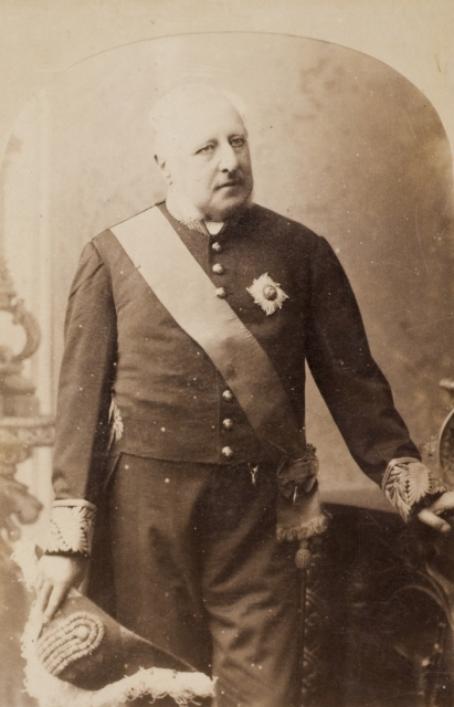
Lord Augustus Loftus, 1884 by Freeman & Co, Sydney. courtesy State Library of NSW. Image No: a4220015. Below: The Powder Works, 1885, courtesy Mona Vale Library Images.
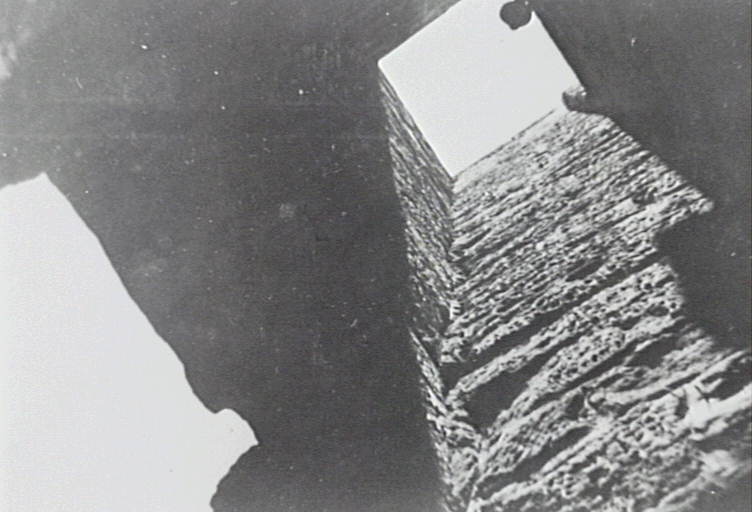
The Shot Tower rubble, 1930 courtesy Ken Blacket and Mona Vale Library
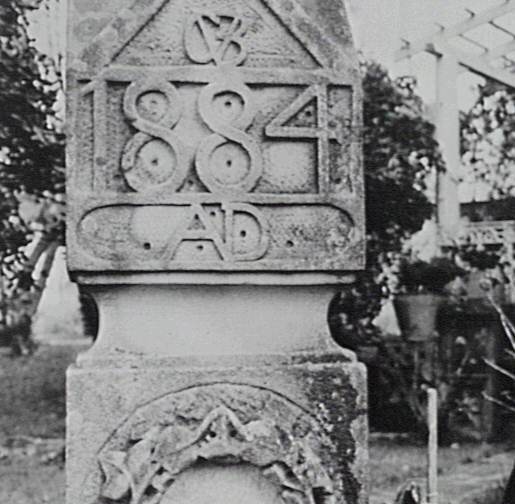
Stone Pillar outside Ingleside home, 1970. Courtesy Mona Vale Library Images.

Above: New South Wales. Department of Lands. Parish of Narrabeen, County of Cumberland [cartographic material] : Metropolitan Land District, Eastern Division N.S.W. 1886. MAP G8971.G46 svar (Copy 1).
Below: New South Wales. Department of Lands. Parish of Narrabeen, County of Cumberland [cartographic material] : Metropolitan Land District, Eastern Division N.S.W. 1905. MAP G8971.G46 svar (Copy 1). Tile b1.Made in 1895 -
Below this an enlargement from: : New South Wales. Department of Lands.Parish of Narrabeen, County of Cumberland ... N.S.W. [cartographic material] 1895. MAP F 173. all courtesy National Library of Australia. G M Frankand was brother to G J Frankland - see Yabbying In Irrawong and Warriewood


The Remarkable Story of "Baron" von Bieren
Ruins of Old Powder Works at Narrabeen.
(Written for the "Sunday Pictorial" by LIONEL G. WIGMORE.)


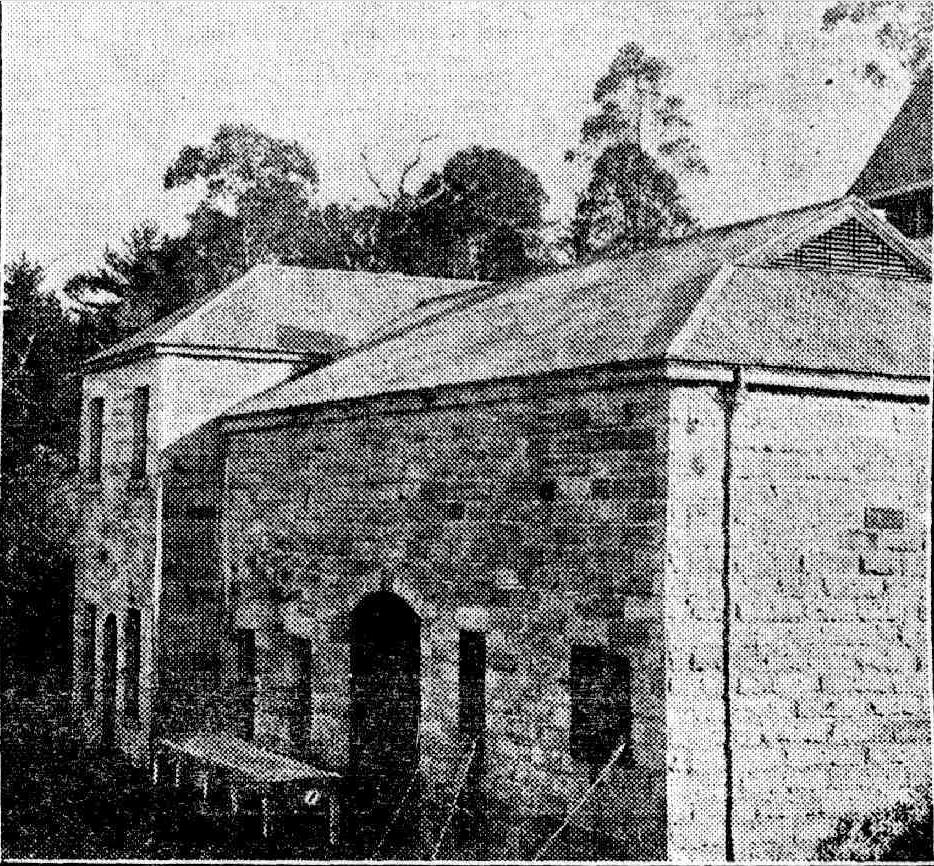
Australia's Gunpowder Plot - By W. E. M. ABBOTT
ON March 6, 1884, the "Herald" announced that a gunpowder mill was to be established at Narrabeen. It was to be the only manufactory of its kind in the colony. The writer of the article pointed out that apart from "difficulties" if Great Britain became involved in war with any other European Power (in which event our supplies of explosives would be cut off), there had been a marked increase in quantities of blasting powder and sporting powder imported into New South Wales:
1879 . 477,1581b.
1880 . 1,542,9221b.
1882 .2,288,1011b.
He went on to rub his hands at the prospect of the many people the proposed works would employ, and to point out that the distance from the city was favourable "in case of an explosion which would be attended with no general inconvenience."
Mr. Blanchard, Chief Warrants Officer, inspected the proposed site and later a licence was granted to Mr. C. Van Buren to manufacture explosives.
VAN BUREN took up 320 acres, and tentatively arranged for the purchase of 700 more. "A charming residence was erected in the centre, architecture being a combination of American, French, and Swiss Styles, with an octagonal tower and a Swiss Turret."
This strangely polyglot building it must have been a veritable eye-sore-was called "Ingleside." The works were to be known as "The Ingleside Powder Mills."
Stone magazines were planned, a mixing building, a charcoal house, a nitre house, and an engine house. Up to this time the chief difficulty in establishing powder mills in Australia had been the unsuitability of any indigenous timbers for the making of charcoal adaptable for the manufacture of gunpowder.
Leading English gunpowder manufacturers had reported unfavourably on timbers available, which, they said, burnt to ashes. Van Buren however carried the day by reporting a Peppermint (one of the Eucalypti) as being suitable, and apparently his opinion convinced the powers that were.
From the hour of his arrival in Australia in 1882, Van Buren-some called him Von Buren-demonstrated only too brilliantly his power of "selling himself" and his capacity as a go-getter. Having secured the "Ingleside" site, he called for contracts to make a road from Lane Cove Road for the transport of his materials, plant, and furniture.
The Press announced that Van Buren proposed to make an explosive for torpedoes, mentioning incidentally that the tendency of nitro-glycerine to corrode the nipples of these missiles would be arrested by Van Buren's declared ability to produce an explosive from cotton seed oil, which preserved nipples and made them last 15 to 20 years. It was hoped that the Ingleside works would be sufficiently advanced in six weeks to manufacture blackpowder and employ 80 persons.
PROMINENT citizens were roped into the web, and the Governor, Lord Augustus Loftus, was persuaded to act as "patron."
For four years all (except the making of powder) went swimmingly. Living and entertaining in princely and almost feudal style the genial German relieved leading public men of some £20,000.
It is recorded that a company floated and known as the Australian Powder and Explosives Manufacturing Works, proved avid for money first £4,000, then £8,000, then £16,000 of the company's cash vanished in three years. While the shareholders were lavishing money on Van Buren, he lavished hospitality on them in return in his "chalet" high up in the beautiful hills overlooking Narrabeen.
A description of the terrain told of a gentle slope near the house which ran to a secret gorge so cunningly contrived by nature as to be invisible from any point roundabout. It was large enough to contain and hide a building of considerable size. Significantly, the tower of the "chalet" was the only part of the house which overlooked this gorge and it was forbidden to visitors.
Not far from the house was a large structure plain to see. It was the alleged powderworks from which the emergence of the first grain of powder was anxiously awaited. Finally the shareholders grew restive. People began to murmur. Creditors began to press their accounts.
ABOUT the middle of 1885, Van Buren was declared insolvent. That didn't worry him at all. He hurried to Melbourne as Mr. G. Walleridge, and took passage for England, via Cape Horn. When his departure was discovered a warrant was issued for his arrest. During the voyage he tried to persuade the skipper of his ship to land him at Rio, offering payment for this service. The captain refused. Van Buren then tried to bribe him to transfer him to the next steamer they might meet, but no steamer was sighted. Even then he did not give up, for, on arrival at Margate, he again approached the captain, who by then was highly suspicious, for permission to go ashore in a tug. The captain said the water was too rough. At midnight, however, a tug did get alongside at great risk- and on it was a police officer from Sydney with a warrant in his pocket!
Van Buren was taken back to New South Wales and charged with embezzling £800-a feeble charge, accountable probably to the fact that though the powderworks swindle was palpable, it was not easy to prove it so with the passage of the years. After many legal delays the prisoner was sentenced in September, 1886, to two years in gaol without hard labour.
THE full implications of his Ingleside activities were not revealed until the outbreak of the first World War. It was then discovered that the Ingleside venture was not a mere swindle by one person of others but of one nation of another. The mysterious building in the secret gorge, containing two huge drying chambers, had also a central workroom, large laboratories, and several offices. In effect, the building had been an official sub-branch of the German Government.
As far back as 1882, Germany had discovered that a powerful explosive could be made from the grass tree, still to be found in the French's Forest area. Van Buren, a research chemist, had been specifically sent out to make scientific experiments on the spot and, of course, his powderworks project had been merely a"cover "
Until the outbreak of hostilities in 1914, the Australian grass tree was regularly exported to Germany in large supplies-ostensibly for "varnish making " Thus immense stores of the raw material of a powerful explosive were steadily accumulated for use against the Allies-and even against Australia herself.
"HERALD" SATURDAY MAGAZINE Australia's Gunpowder Plot. (1949, May 21). The Sydney Morning Herald (NSW : 1842 - 1954), p. 7. Retrieved from http://nla.gov.au/nla.news-article18115862
THE MULTIPLE MURDERER
THE multiple murderer furthered the interests in Australia of one or two industries which were already fairly well established, such as the swindling industry and the industry of death. He also inaugurated, quite spuriously, one of our secondary industries, and although this inaugural effort ended in insolvency, it is of interest when considering the development of that particular industry.Unfortunately Unfortunately it is of even greater interest when considering the more tragic industry of death. IT is not known whether the multiple murderer had committed any crimes before he came to Australia, but lie certainly did commit quite a number of murders at a later date, in various' parts of Europe.
His name was Carl Clinton Hiram George Wallridge von Bieren.
Judging by his name he must have had something of British blood in his ancestry, which may in part account for his having been chosen for the mission he performed in Australia, and which, at the same time, makes his homicidal activities the more horrific.
Carl von Bieren arrived in Sydney in 1882, and announced himself as a ' chemist of high scientific attainments. There is reason to believe that his claim was justifiable, and the murders which he subsequently committed were such as could have been compassed only by a master-technician in chemical science. Apart from his declared status in this regard, he was a man of culture, with an Ingratiating politeness, and the brain of a diplomat, using that word in the derogatory sense to which international duplicity has reduced it.
One of his first performances in Australia was to buy a tract of land among the hills overlooking Narrabeen beach. It was a remote spot, even the beach being, at that time, an unvandalised region of palm trees and tranquillity, and it would seem, from the decisiveness with which Carl von Bieren acted, that preliminary investigations of the locality had been made prior to his arrival, or, possibly, on the occasion of a previous and less public visit by himself.
He called the purchase, "Ingleslde,"' a homely name, and there, at considerable expense, he built a number of structures. One was a nice residence, chiefly of wood, of ornate design, Swiss chalet style, and distinguished by a tower at one corner. Another was a huge sandstone and cement reservoir, built Into the hill-slope a few hundred yards up from the house. Yet a third was a large building between the residence and the reservoir. These buildings were plainly visible to the surrounding country and their alleged purpose became clear when Carl von Bieren announced that he was going to establish the gun powder-making industry in Australia.
Such was his suaveness, his seeming sincerity, and the importance to Australia of his enterprise, that he had no trouble in floating the Australasian Powder and Explosives Manufacturing Company, many of the leading citizens taking, shares in it.
The new industry, among other things, was designed to make Australia more or less self-contained from a defence point of view, and as such was of national import It was inaugurated with all due ceremony, and arrangements were made for the opening of the powder-works, to be officially performed by the then-Governor of N.S, Wales, a gentleman with the comic-opera name of Lord Augustus Loftus The opening was not propitious. The peer with the comedy name struck trouble on the way, and his carriage got bogged. But he decided to be true to the august and lofty Loftus tradition and walk the rest of the way. The locality was even more remote than he had suspected. The party got astray, arriving eventually at the von Bieren chalet some four hours late.
As part of the opening ceremony, an explosion was staged just to show that local industry could really make a stir. It rose to the occasion even too willingly, carrying one of the explosion-manipulators aloft with it, and injuring him quite badly. That was even more of a damper than the weather had been, but the powder works was duly opened, and Lord Augustus Loftus was allowed to view the chalet, inside and out, the powder works building, ditto, and the reservoir.
But what he was not allowed to see was another building, a much more imposing structure, which was set within the seclusion of a small gorge less than, a quarter of a mile in front of the chalet. This gorge drops suddenly out of the gentle slope of the surrounding terrain and is screened by trees, so that its existence would never be suspected, much less the existence of the solid sandstone building set close against the wall of cliff which forms the head of the gorge. The building was of two-storeys. It had two chambers with curved roofs, a large central workroom and smaller rooms which might have served as offices and laboratories.
At the back, against the cliff face, was a lift-well leading from the ground floor, or gorge-bottom, up to the top of the cliff, which was just high enough to hide the building excepting from the top of the tower at the chalet. This suggests that the structure was not only an ornament, but a watch-tower. What work went an within the hidden building is not known for certain, but the nature of it can be reasonably conjectured, and it was there, no doubt, that the real ability of Carl von Bieren as a chemist displayed itself, since there can be no' doubt that some interesting experimentations were completed there. Meanwhile the powder-works continued to serve a twofold purpose, to camouflage the real work being done In that remote spot, and to enable Carl von Bieren to exercise his dual faculties of inherent rogue and spendthrift host.
Very little. If any, powder was produced. As an embryo Australian industry the venture was uot all it might have been. But as an absorbent for shareholders' money it was remarkable. Calls were made from time to time, and by the end of three years : successive amounts, totalling £20,000, had evaporated. By this time Carl von Bieren had completed the mission which really had brought him to Australia. That mission had kept him liberally supplied with money. There had been no need for him to appropriate the funds of the camouflage company as well. But he was a born rogue and this trivial swindle was a natural Sideline to him. It was about the middle of 1885 when von Bieren had run his course. According to programme he should have returned quietly to Europe. Instead he got entangled in insolvency proceedings. The shareholders in the powder company were the only explosives that venture had produced, but they were highly explosive.
Carl von Bieren hurried to Melbourne and, as George Wallridge, sailed for England in the "Loch Vennachar," going by way of the Horn. He tried to land in South America, he tried to get transferred to some other vessel in the Atlantic, he tried to land secretly when the "Loch Vennachar" reached Margate. Fate foiled him each time. He was brought back to Australia on a warrant which had met him in England, was tried on a charge of having embezzled £800, and in September, 1886, was sentenced to two years and ten months' gaol. In due course he returned to his homeland, and that was the last heard of him for some time.
Cash Evaporated
Gradually, however, a sequel to his sojourn in the Ingleside fastnesses became revealed, chiefly as a result of another industry, that sprang up and was more or less centred on that locality. This was the export of grass-trees, or blackboys as they are sometimes called, which were then very plentiful all. through that belt of country. At first this trade was something of a mystery, but later it was learned that the grass-tree stem contained an extract valuable for the making of varnish. This seemed in some degree to explain the hidden building which had meantime been discovered In the gorge.
Apparently It had been used for conducting experiments on the spot, experiments which had remained a secret. That was the second swindle von Bieren had worked. Embezzlement had been one. The spurious powder-works to hide a varnish-making activity was the other. But the second swindle was really a much greater thing than this. The secrecy had not been merely a piece or commercial astuteness. It was a matter of International duplicity. Perhaps that is why the born diplomat, von Bieren, had been chosen to contrive it This was discovered only when it was too late, and when von Bieren had been revealed as a murderer. In this he had certain associates.
They had. In fact, constituted something in the nature of a Murder Club, and it had actually been to further the interests of this institution that he had come to Australia to make his experiments. His purpose had been camouflaged by suaveness and duplicity. The secret building in the gorge had likewise been camouflaged as a powder-works and, in turn, by the alleged varnish-making ingredient. What those grass-trees really contained, as demonstrated by von Bieren's secret experiments In the building in the gorge, was a deadly , explosive. It was for this that they had been exported so mysteriously, and, as a matter of history, that secret ingredient formed the basis of German armaments during the Great War. To obtain this deadly ingredient von Bieren and his associates of the Murder Club had gone to all the trouble of setting up the establishment at Ingleslde, and it is this activity that entitles Carl von Bieren to the degree of multiple murderer. The actual number of murders standing to his debit is not really known, but so far as this industry of death concerns Australia, it is sufficient to remember that Carl von Bieren, with his associates, murdered between fifty and sixty thousand, all Diggers. THE MULTIPLE MURDERER (1936, April 4). Smith's Weekly (Sydney, NSW : 1919 - 1950), p. 24. Retrieved from http://nla.gov.au/nla.news-article235830864
ROADS OF TODAY TALES OF YESTERDAY By JAMIE and JANE
PALM BEACH (ii.) No. XXVI
THE Powder Works Road branches off to the left just after crossing Narrabeen Bridge. Thereby hangs a tale. Baron von Beiren was a Dutch American who settled in the district during the 'eighties. He was a chemist and built not only a fine home, Ingleside House, but a powder works. In the year 1924 a sensational article appeared in a Sydney newspaper saying that von Beiren, a German spy, had built in a secret gorge a mysterious building Old residents treated the story with scorn. They will tell that they knew the Baron and his wife as Dutch Americans, and that the lady put £5000 of her own money into the company known as the Australian Gunpowder and Explosive Manufacturing Company. The company failed, largely because the Government condemned the iron cylinders as being dangerous; they should have been constructed of copper.. Von Beiren was ultimately sentenced as a fraudulent bankrupt to two years and ten months' imprisonment, and died in prison. The remains of his old powder works can still be seen. We drove on through the cutting which cleaves through Sheep Station Hill, past numerous glasshouses in which the cult of the tomato is a thriving industry, to the Rock Lily Hotel. The Rock Lily Hotel is an old and ancient hostelry, and was noted for its French chef, whose skill and originality in devising new dishes caused him to win an easy supremacy over the unimaginative colonial cooks of the day. A ROAD branches off to the left to St. Ives, and a second one a few hundred yards farther on leads to Bayview and Church Point. ROADS OF TO-DAY—TALES OF YESTERDAY (1937, August 25). Sydney Mail (NSW : 1912 - 1938), p. 43. Retrieved from http://nla.gov.au/nla.news-article160498911
'Ingleside' and 'Powdermill', Narrabeen - 1924


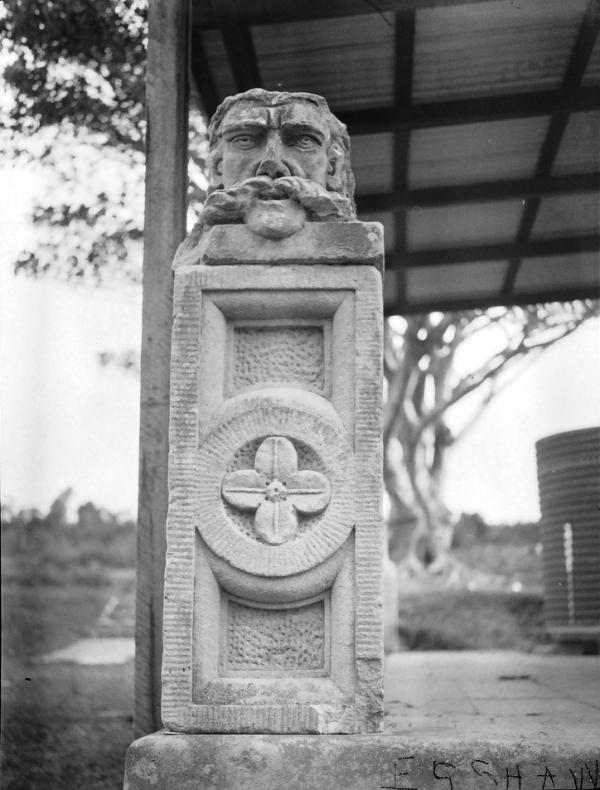





Ingleside Powder Mill Threads collected and Collated by A J Guesdon, 2012